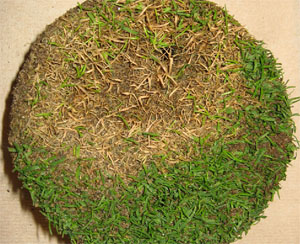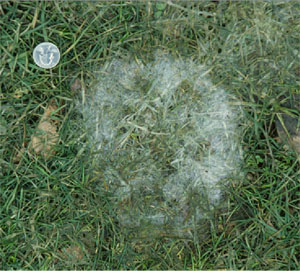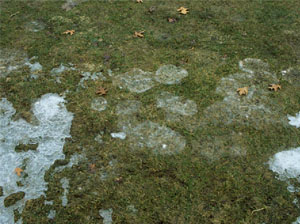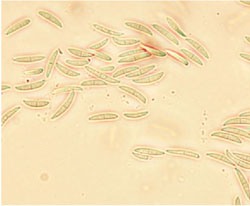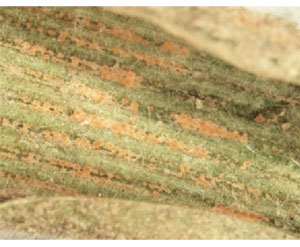Under the Scope Feature
Pink Snow Mold- Microdochium Blight
April 2014
With the melting snow and hope of spring it may be time to start thinking about Pink Snow Mold again. Pink Snow Mold is a disease of turfgrass associated with melting snow or cold, wet periods. The fungus produces roughly circular bleached patches up to 60 cm in diameter. Often the mycelium of the fungus is readily visible. This disease can become severe when turf is subjected to prolong periods of cool, wet weather from early autumn to late spring, and does not require snow cover to develop. A severe infection by Microdochium nivale may kill patches of turfgrass.
The fungus M. nivale survives unfavorable periods as dormant mycelium in infected plants and plant debris. Wet weather conditions with temperatures around 16°C will promote rapid spread of the disease. Dry, warm weather causes the fungus to revert to its dormant state. The fungus can be transmitted throughout the year on equipment, people, animals, wind or in water.
Discourage development of pink snow mold with cultural practices. Avoid making late fall applications of fertilizer that may stimulate succulent growth; mow turf as long as it continues to grow in the fall; and avoid compacting snow over the lawn. Where snow mold has caused damage, rake the matted grass in order to encourage new spring growth. If re-seeding areas where the disease has been a problem, use disease resistant turfgrass varieties.
Below: Where disease level is severe, large numbers of spores may develop from sporodochia on leaf surfaces and appear pinkish or salmon colored (provided by S. Jensen, Cornell University).
CU-PPDC News Feed
Diagnostic review reports and the latest lab updates delivered directly to you. Learn how!

